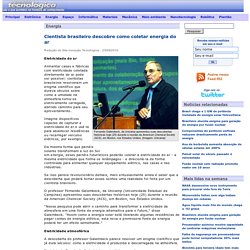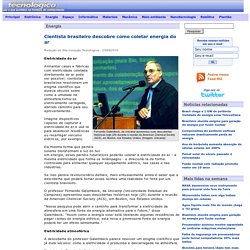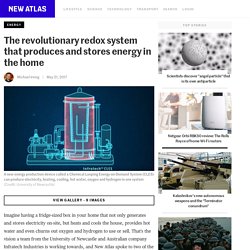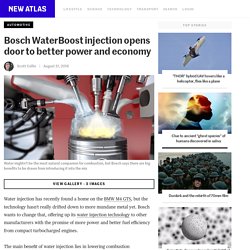

Nanotrees harvest the sun's energy to turn water into hydrogen fuel. (PhysOrg.com) -- University of California, San Diego electrical engineers are building a forest of tiny nanowire trees in order to cleanly capture solar energy without using fossil fuels and harvest it for hydrogen fuel generation.

Reporting in the journal Nanoscale, the team said nanowires, which are made from abundant natural materials like silicon and zinc oxide, also offer a cheap way to deliver hydrogen fuel on a mass scale. “This is a clean way to generate clean fuel,” said Deli Wang, professor in the Department of Electrical and Computer Engineering at the UC San Diego Jacobs School of Engineering. The trees’ vertical structure and branches are keys to capturing the maximum amount of solar energy, according to Wang. That’s because the vertical structure of trees grabs and adsorbs light while flat surfaces simply reflect it, Wang said, adding that it is also similar to retinal photoreceptor cells in the human eye. Cientista brasileiro descobre como coletar energia do ar. Eletricidade do ar Alimentar casas e fábricas com eletricidade coletada diretamente do ar pode ser possível: cientistas brasileiros resolveram um enigma científico que durava séculos sobre como a umidade na atmosfera torna-se eletricamente carregada, abrindo caminho para seu aproveitamento.

Imagine dispositivos capazes de capturar a eletricidade do ar e usá-la para abastecer residências ou recarregar veículos elétricos, por exemplo. Da mesma forma que painéis solares transformam a luz do Sol em energia, esses painéis futurísticos poderão coletar a eletricidade do ar - a mesma eletricidade que forma os relâmpagos - e direcioná-la de forma controlada para alimentar qualquer equipamento elétrico, nas casas e nas indústrias. Se isso parece revolucionário demais, mais entusiasmante ainda é saber que a descoberta que poderá tornar esses sonhos uma realidade foi feita por um cientista brasileiro. Cientista brasileiro descobre como coletar energia do ar. Eletricidade do ar Alimentar casas e fábricas com eletricidade coletada diretamente do ar pode ser possível: cientistas brasileiros resolveram um enigma científico que durava séculos sobre como a umidade na atmosfera torna-se eletricamente carregada, abrindo caminho para seu aproveitamento.

It Runs On Water (1995) Leg. PT- BR.
Motor de Ressonância. Solar. Vento. Calor. Água. Baterias. Tesla. Propulsão Elétrica. Electrical Vehicles. Carbon. Revolution. Renewable Energy - BBC Technology Documentary NEW+ Science Documentary HD. Energy on Demand. The revolutionary redox system that produces and stores energy in the home. Imagine having a fridge-sized box in your home that not only generates and stores electricity on-site, but heats and cools the house, provides hot water and even churns out oxygen and hydrogen to use or sell.

That's the vision a team from the University of Newcastle and Australian company Infratech Industries is working towards, and New Atlas spoke to two of the minds behind this potentially game-changing "Swiss army knife" of energy production. The team calls the device a Chemical Looping Energy-on-Demand System (CLES), and it's based on an original invention by Professor Behdad Moghtaderi of the University of Newcastle. Infratech, spearheaded by CEO Rajesh Nellore, has been involved almost from the start, helping out with the technical development of the system as well as plans to commercialize it. An industrial-scale reference plant was unveiled in Newcastle, Australia in early April, designed for a hospital, retirement village or a similar-sized commercial building.
Dual modes Payback. Bosch WaterBoost injection opens door to better power and economy. Water injection has recently found a home on the BMW M4 GTS, but the technology hasn't really drifted down to more mundane metal yet.

Bosch wants to change that, offering up its water injection technology to other manufacturers with the promise of more power and better fuel efficiency from compact turbocharged engines. The main benefit of water injection lies in lowering combustion temperatures within the engine. Current compact turbocharged motors are pushing their limits, both in terms of performance and fuel efficiency. Adding water to the air/fuel mixture lifts those boundaries by actively lowering the temperature within the combustion chamber, allowing a higher compression ratio without the risk of knock. According to Bosch, running a higher compression ratio makes for improved performance and around 4 percent less CO2 under test conditions.
Although there are big potential benefits, the water injection system is reasonably simple in its operation. Source: Bosch.